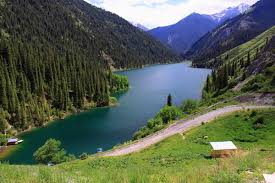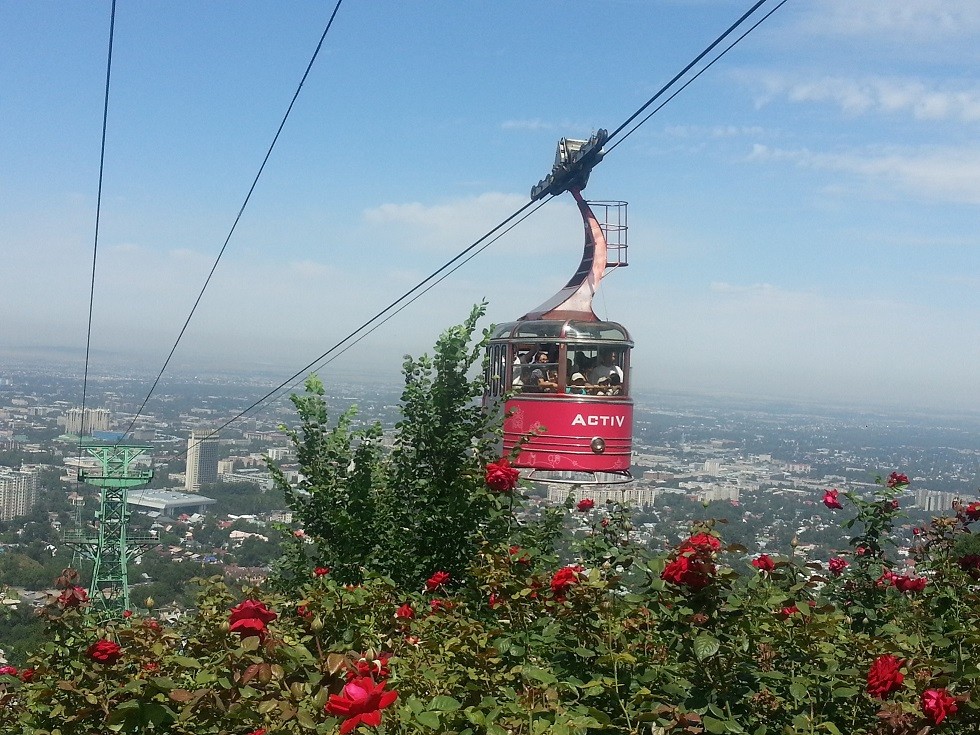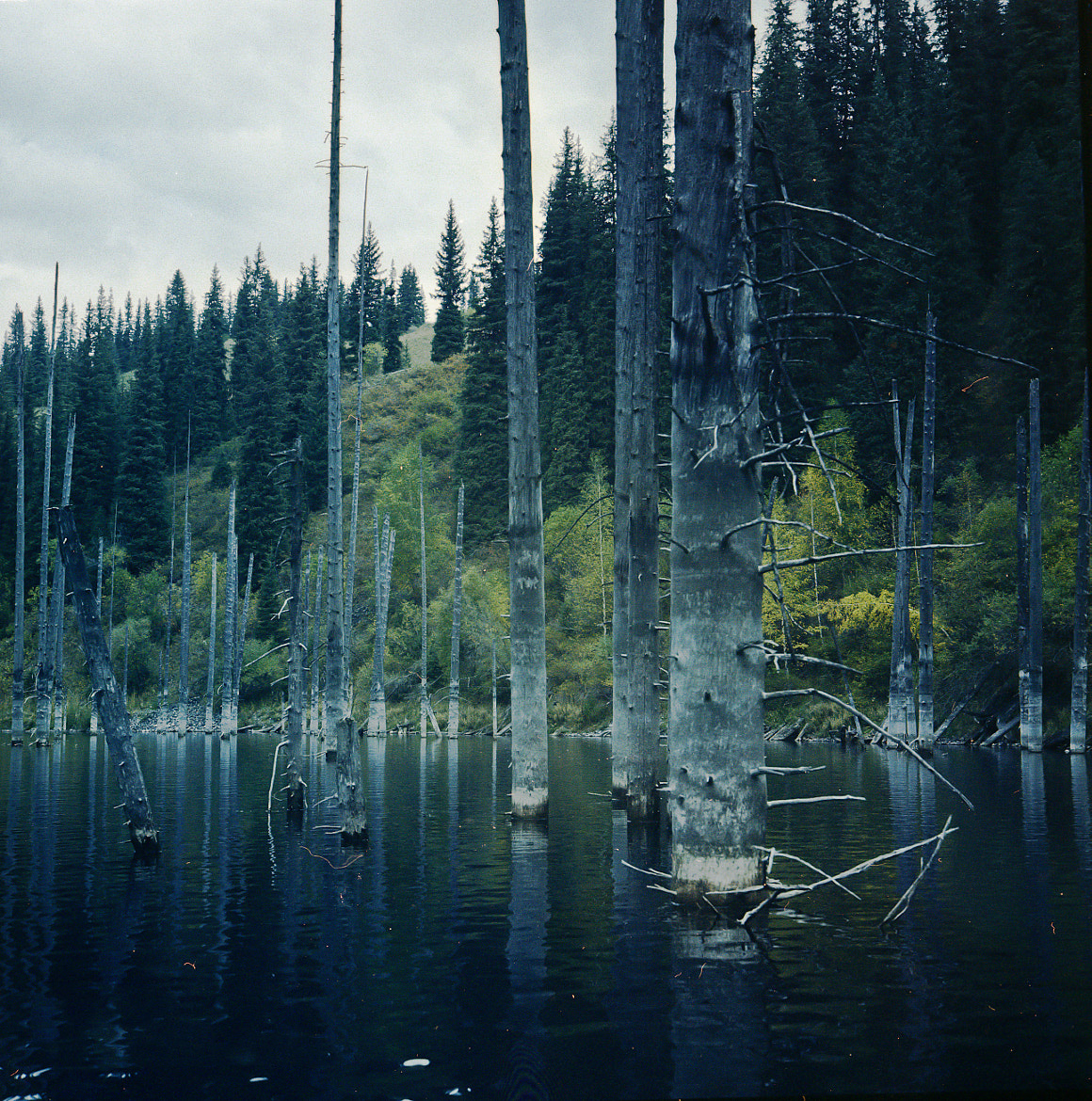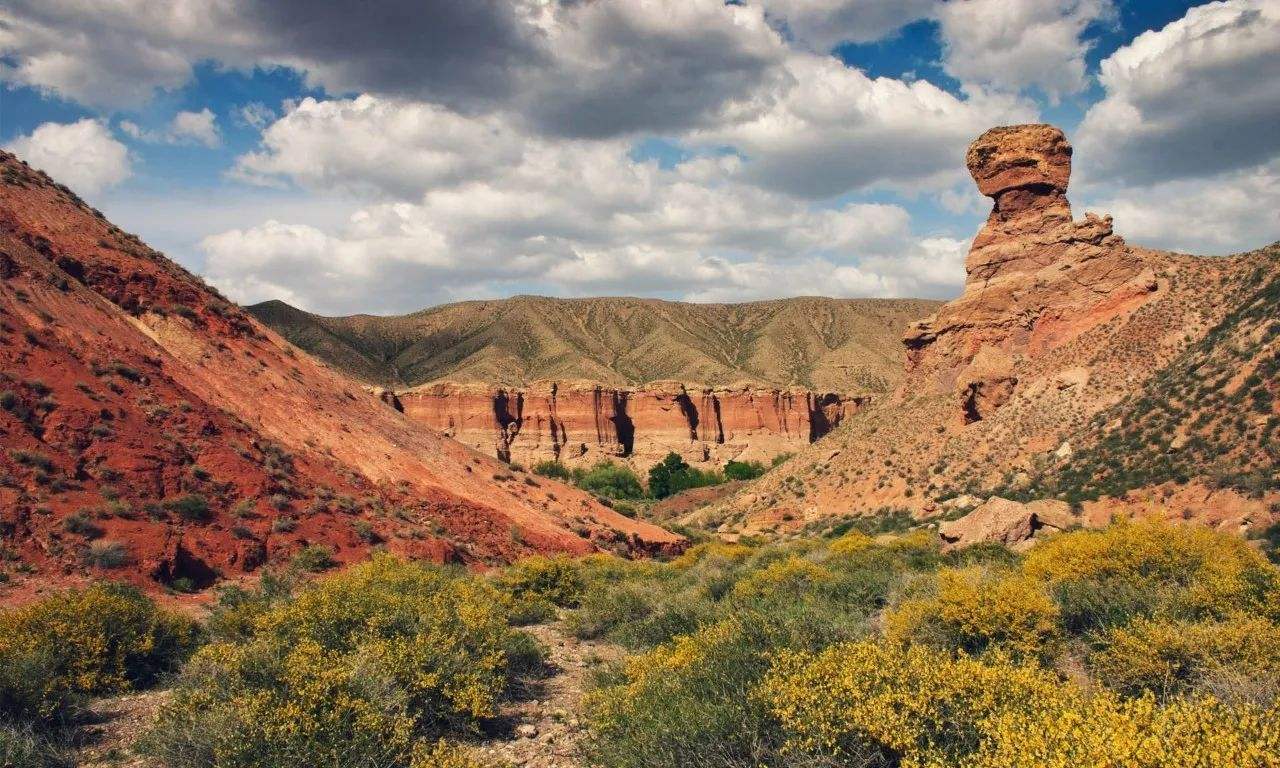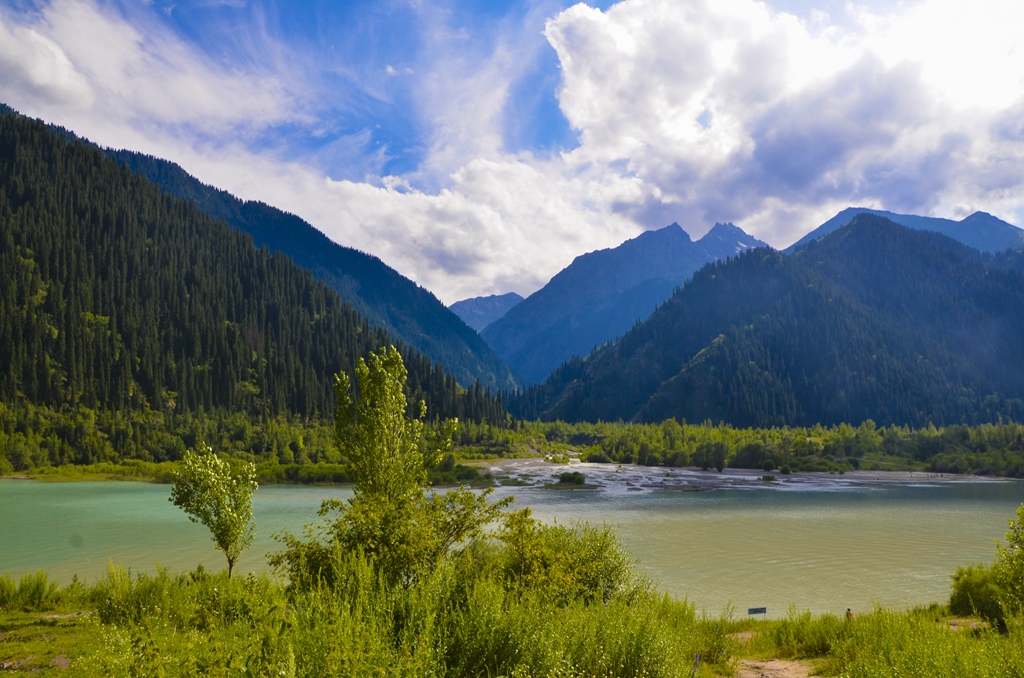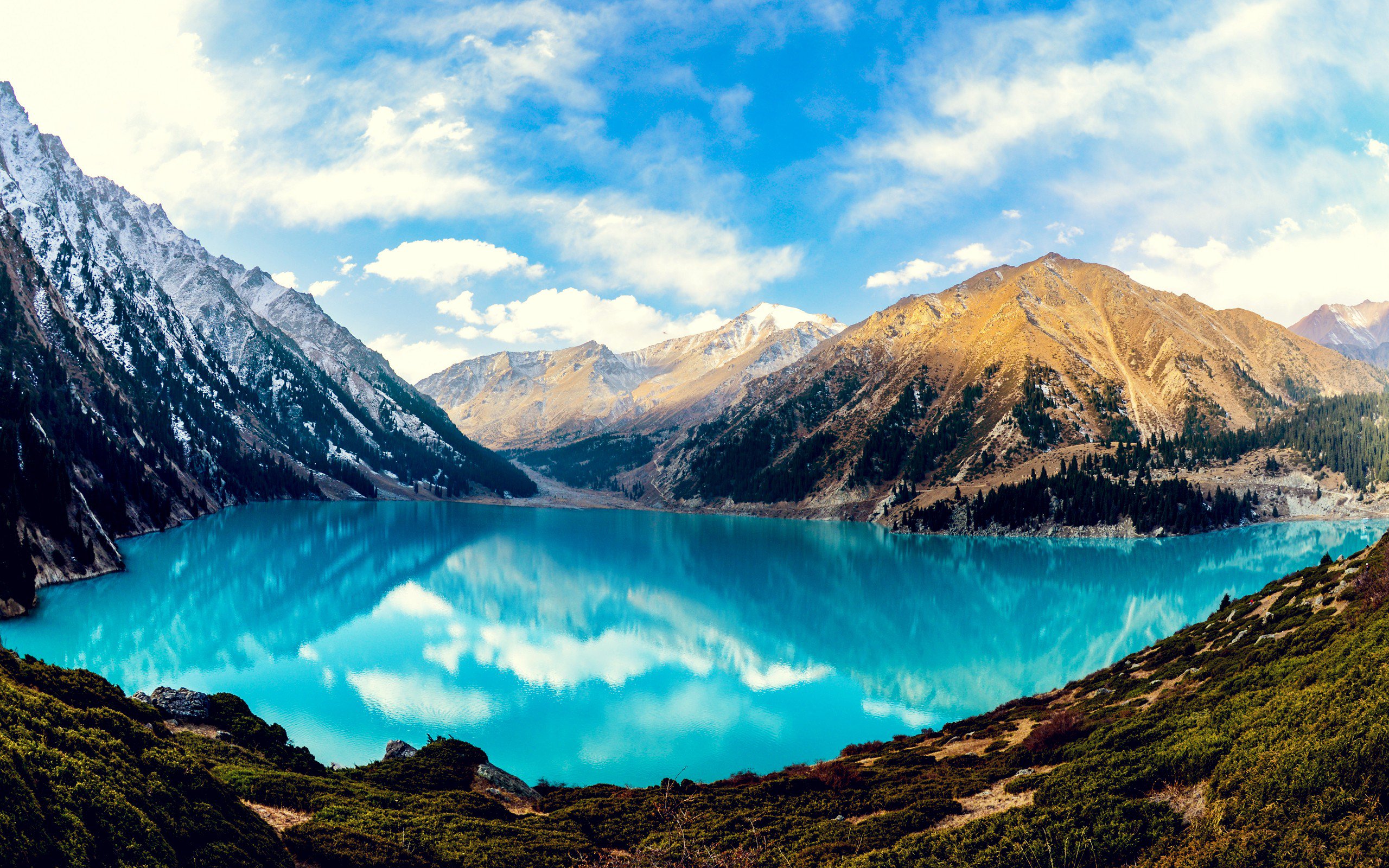Kolsay Lakes National Park is centered on the Kolsay Lakes, a system of mountain lakes on the north slope of the Tian Shan Mountains of southeast Kazakhstan, 10 km from the border with Kyrgyzstan. The scenic Lake Kaindy is also in the park. Nature conservation is an important part of the park's mission, with 72% of the territory under strict protection, and only 13% set aside for tourism and recreation. Kolsay Lakes is located in Raiymbek District and Talgar District of Almaty Region. The park boundary is 120 kilometers (75 mi) southeast of the regional city of Almaty, although the road mileage is much longer.
The lakes of the park are strung along the Kolsay River, which flows south-to-north out of the Tian Shan. Two ranges of the Tian Shan contribute: the Küng?y Ala-Tau Range and the Trans-Ile Alatau. The northeast corner of Lake Esik-Kul is 30 kilometers (19 mi) to the south on the south side of the Tian Shen. The major lakes are:
Lower Kolsay Lake. A natural mountain reservoir created by landslides that blocked the Kolsay River, the lower lake is about 1 km long, 400 meters wide, and 80 meters in depth. It is accessible by road and has guesthouses and campsites. (altitude: 1,818 meters).
Middle Kolsay Lake (Mynzholky). Five kilometers upstream from the lower lake, the middle lake is the largest of the three, and reaches a depth of 50 meters. (altitude: 2,252 meters).
Upper Kolsay Lake. Six kilometers above the middle lake, the upper lake is surrounded by spruce trees and alpine meadows. It is 6 km from the Sara-Buluk pass and Kyrgystan. (altitude: 2,850 meters).
Ecoregion. The park is in the Tian Shan montane steppe and meadows ecoregion, which covers the middle and upper altitudes of the Tian Shan mountains of Central Asia. The area catches enough rain to support meadows and forests, and because of its isolation is home to many rare plant and animal species.
Climate. The climate in the Kolsay Lakes region is "Humid continental climate, cool summer subtype" (Koeppen Classification Dfb). This climate is characterized by large swings in temperature, both diurnally and seasonally, with mild summers and cold winters. In July, temperatures can range from 30 °C (86 °F) during the day, to ?5 °C (23 °F) at night.
Plants and Animals. Scientists have recorded 704 species of plants in the park, 12 of which are classified as rare. For animals, the park has recorded 50 species of mammals, 197 species of birds, 2 reptile, 2 amphibian (green toad and süyirtums?q frog, and 2 species of fish (rainbow trout and Tibetan bare k?kbas). Six mammals found in the park are classified as rare in Kazakhstan: the Tian Shen brown bear (U. a. isabellinus), Central Asian river kam?at?, Turkestan lynx, Snow leopard, Tien Shan argali, and the stone marten.
There are guesthouses in the nearby village of Saty, and campsites. There is a 25 km hiking route that begins at the lower lake, progresses by the other Kolsay lakes, over the Sary-Bulak pass (3,278 km), and down to Lake Esik-Kul. The route takes three days by foot, or one day by horse.
The Kolsai lakes are supremely suited to hiking and horse riding. You can rent out horses for the day to take you up from Kolsai 1 up to Kolsai 3. If you go hiking, take the path right of Kolsai 1 for a 9km hike to the middle lake at 2250m (the most beautiful one in my opinion). Then take the path left of Kolsai 2 for another strenuous 6km to reach the top lake at 2650m.
Kolsai lake 1 and 2 offers excellent trout fishing. The local species is rainbow trout. Lake 3 apparently is not very populated, perhaps due to the height. If you are interested in birdwatching or seeing other animals, there are lots of them hiding in the surrounding forests. Examples are ibex, fox, badger and deer.







